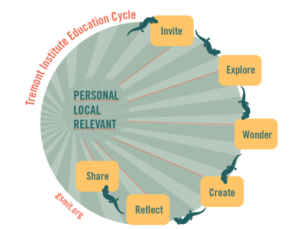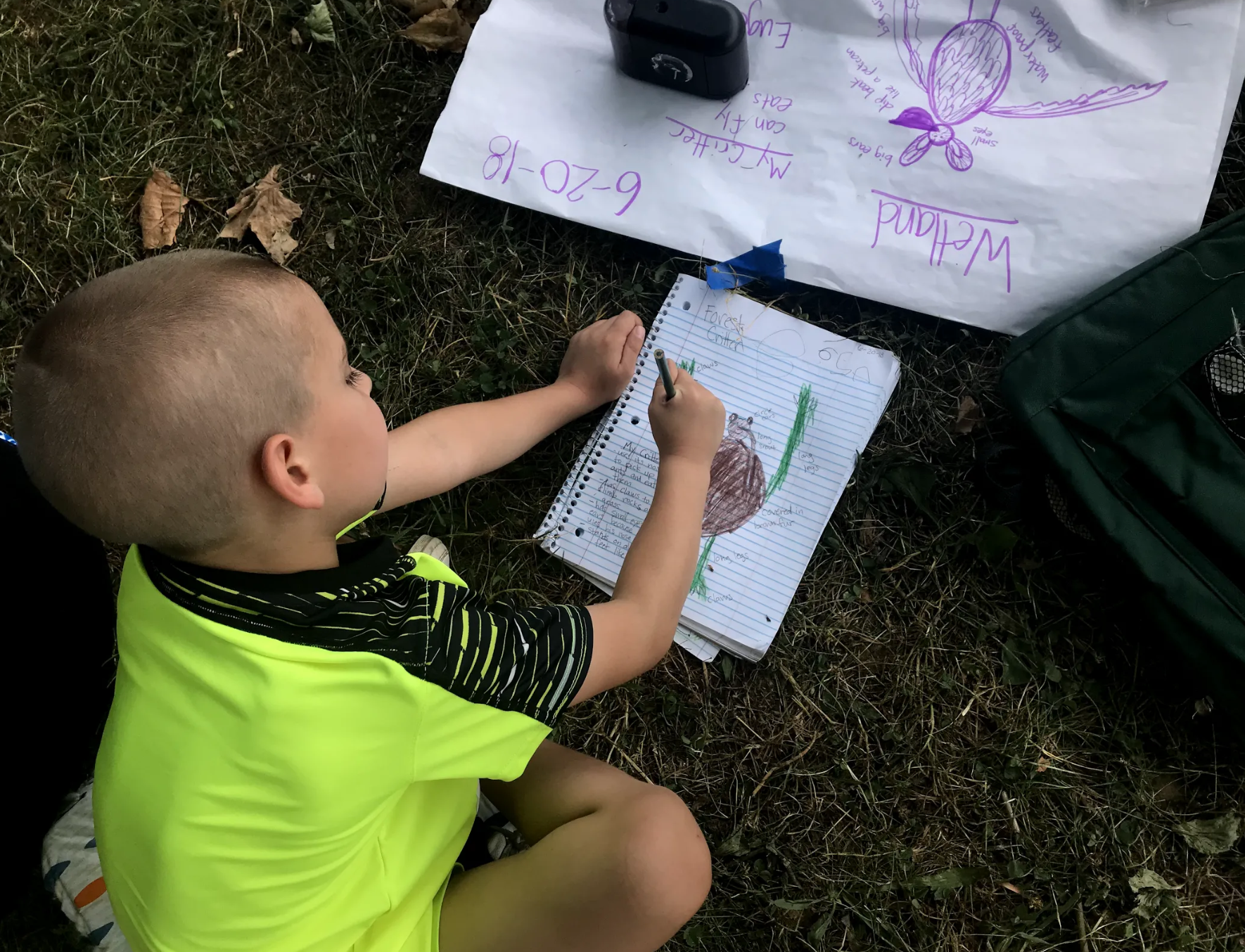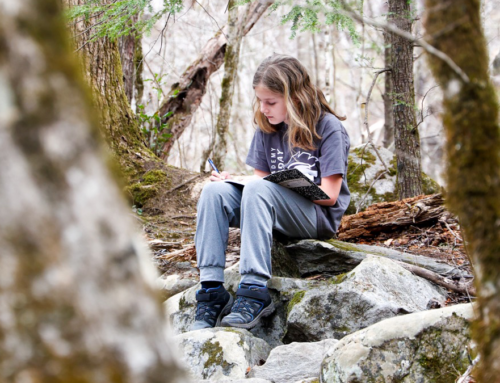Calling all educators!
Why do black bears have thick fur, while salamanders have slimy skin? Why do owls have big eyes and tiny ears, while rabbits have big ears and small eyes? Does an animal’s habitat play a role in determining its different physical characteristics?
In this lesson, your students will learn about animal adaptations as you all explore and investigate the outdoor space around your school. Your students will practice their observation skills, harness their curiosity, embrace their creativity, learn and use scientific vocabulary, and strengthen their interpersonal skills as they work and present together. Your class will have an opportunity to grow, not just academically as they gain scientific knowledge, but also socially and emotionally, as they collaborate and incorporate creativity into their one-on-one relationships with each other.
 INVITE your students to investigate and analyze animal adaptations with you.
INVITE your students to investigate and analyze animal adaptations with you.
Choose a local wild animal that your students will be familiar with and have a printed photograph of it to use as a reference. As you show the animal to your students, ask them guiding questions about the animal’s habitat and its physical features or behaviors.
- What kind of environment does this animal live in?
- Do you notice any features or behaviors that may help this animal survive in its habitat?
- How do you think an animal’s habitat might affect the different behaviors or physical features it has?
As your students discuss the features and behaviors they notice, create a class list of their thoughts on chart paper. Once the brainstorming process and your list are complete, tell your class that they have created a list of adaptations! Ask if anyone can explain what “adaptation” means, based on looking at the items on the list. Elaborate on the concept of adaptations and how they relate to habitats and ensure that your students have a firm understanding before moving onto the next step.
EXPLORE
Let students explore the schoolyard for animals in their habitats. For each animal the students find, students should observe their adaptations and document those observations in their journals. After 10–15 minutes of exploration, bring students back together to discuss the adaptations they observed in their schoolyard.
WONDER
Construct another class-wide list of adaptations that students found during their schoolyard exploration. Once all students have contributed at least one adaptation, have them pair off to discuss any adaptations that are necessary to live in your school’s habitat.
- How could the adaptations you observed help these animals survive?
- How do you think these animals might change over time if there is a big change to their habitat, like a field getting turned into a parking lot or trees getting knocked down by a huge storm?
CREATE
Now’s the time for your students to embrace their creativity, using natural materials to create their own critter that they believe would be able to survive in the schoolyard habitat. Instruct your students to use only fallen or dead natural items that they find in your schoolyard as they construct their critters. Emphasize that the critters should exhibit the best adaptations needed for survival in the schoolyard environment. As students create individual critters in nature, assess their understanding by evaluating their ability to construct explanations and justifications for their critter’s adaptations.
REFLECT
Because these constructed critters will eventually decay, have your students draw the critters they’ve created in their journals, label specific adaptations, list the materials they used, and give their fictitious critters a name. As they transcribe their critter, encourage your students to reflect on the process.
- Were you amazed by anything during our lesson?
- What do you wonder that you’d like to know more about?
SHARE
Have students interpret their created critter to the student they partnered with in the WONDER portion. The collaboration with a fellow classmate will give each student the opportunity to form one-on-one relationships and to grow their interpersonal skills.
*NOTE: If you get stuck inside on a rainy day, an alternative method for facilitating this activity would be either to collect natural materials ahead of time for your students to use or to omit this step and have them go straight to creating their critter in their journals.
Coordinating Academic Standards
English Language Arts
L.VAU.4 Determine or clarify the meaning of unknown and multiple-meaning words and phrases by using context clues, analyzing meaningful word parts, and consulting general and specialized reference materials, as appropriate.
R.RRTC.10 Read and comprehend complex literary and informational texts independently and proficiently
SL.CC.1 Prepare for and participate effectively in a range of conversations and collaborations with varied partners, building on others’ ideas and expressing their own clearly and persuasively.
SL.PKI Present information, findings, and supporting evidence such that listeners can follow the line of reasoning
W.TTP.1 Write arguments to support claims in an analysis of substantive topics or text, using valid reasoning and relevant and sufficient evidence.
Science
4.LS2.5 Analyze and interpret data about changes (land characteristics, water distribution, temperature, food, and other organisms) in the environment and describe what mechanisms organisms can use to affect their ability to survive and reproduce
5.LS4: Biological Change: Unity and Diversity
6.LS2.7 Compare and contrast auditory and visual methods of communication among organisms in relation to survival strategies of a population.
8.LS4: Biological Change: Unity and Diversity
ECO.LS2.2 Research examples of adaptations of organisms in major marine and freshwater ecosystems. Develop an explanation for the formation of these adaptations and predict how the organisms would be affected by environmental disturbances or long-term ecological changes.
EVSC.LS2.2 Develop an explanation of behavioral and physical adaptations organisms have for life in aquatic habitats with varying chemical and physical features.
EVSC.LS4.1 Construct an explanation based on scientific evidence for mechanisms of natural selection that result in behavioral, anatomical, and physiological adaptations in populations.
Social and Emotional Learning
Incorporating Social and Personal Competencies into Classroom Instruction and Educator Effectiveness: A Toolkit for Tennessee Teachers and Administrators
Teaching Practice 5: Cooperative Learning- Cooperative learning refers to a specific instructional task in which teachers have students work together toward a collective goal. Teachers ask students to do more than group work; students are actively working with their peers around content in a meaningful way.
Teaching Practice 8: Balanced Instruction- Balanced instruction refers to teachers using an appropriate balance between active instruction and direct instruction, as well as the appropriate balance between individual and collaborative learning. Through balanced instruction, teachers provide students opportunities to directly learn about the material as well as engage with the material.




![A Deep Dive Into Wetlands [Free Lesson Plan]](https://gsmit.org/wp-content/uploads/2024/02/madeline-blog-cover-500x383.png)
![Are You a Math and Science Person or a History and English Person? [Free Lesson Plan]](https://gsmit.org/wp-content/uploads/2024/01/Girls-in-Science-Erin-Rosolina-3-1-500x383.jpg)

